LU27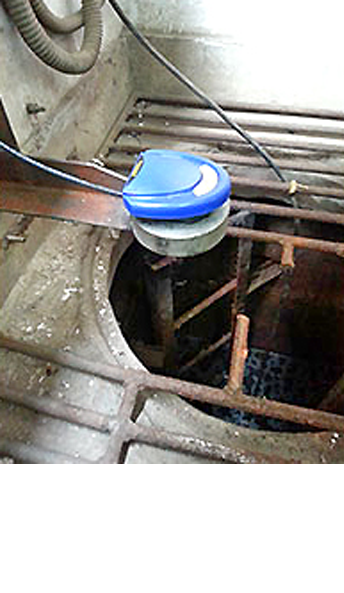
Quick ViewView Full Details |
The
flavor and fragrances (F&F) industry is comprised of companies that develop
and supply ingredients to the food and beverage, perfume, cosmetic and
household product industries. Demand for F&F products has steadily
increased with changing social habits and growth in emerging markets. Such
companies are driven to provide new formulas to meet the diverse needs of a
wider global economy. Here, an EchoSonic ultrasonic level transmitter is
installed over the man way opening of an industrial waste sump. The sump
contains rose oxide and other ingredients that must be collected and
effectively treated prior to being released back to the municipal sewer. Given
the diverse nature of ingredients, and their various characteristics, a
non-contact level sensor was preferred in the application. The IP68 sensor is
connected to the PLC which automatically empties the contents into treatment
when the sump level 75% of its capacity. |
LU80-84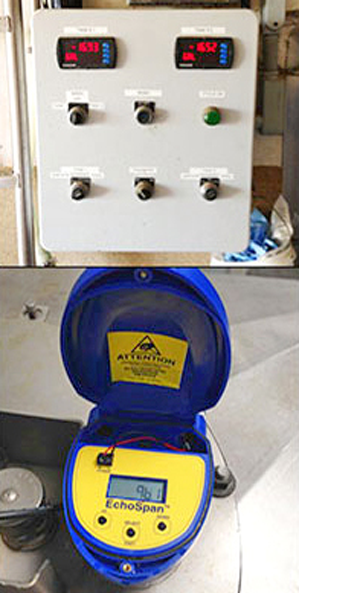
Quick ViewView Full Details |
Each year the US dairy industry produces over 20 billion gallons of milk creating $140 billion in economic output, $29 billion in household earnings, and more than 900,000 jobs. Bulk milk tanks must be sanitized within 30 minutes of the next milking cycle to destroy lingering organisms. Cleaning reduces bacterial numbers on surfaces but does not eliminate all types of bacteria. Therefore, it is imperative that the proper chemicals are used in prescribed amounts in order to achieve a complete cleaning before the next milking cycle. All milking equipment, lines, and utensil surfaces that come into contact with milk must be thoroughly cleaned and sanitized before each milking cycle. Bulk milk tanks must be cleaned after each milk pickup and sanitized before the next milking cycle. The purpose of cleaning is to remove milk soils, organic and mineral solids that form on equipment surfaces after the milk is removed. The purpose of sanitizing is to kill residual micro-organisms present on these surfaces. Without such cleaners, deposits build up and create a breeding ground for bacterial organisms. Improper cleaning allows bacteria to live and grow, resulting in elevated bacteria levels within the milk. Usually an alkaline or chlorinated cleaner is followed by an acid cleaner. Such cleaners contain basic alkalies along with phosphate, wetting and chelating agents. They dissolve milk fats, proteins, and carbohydrates, and loosen any suspend soil particles for in preparation for mechanical removal. At this dairy farm, EchoSpan ultrasonic level transmitters and DataView level controllers monitor the acid day tanks that supply the cleaning process. |
LU27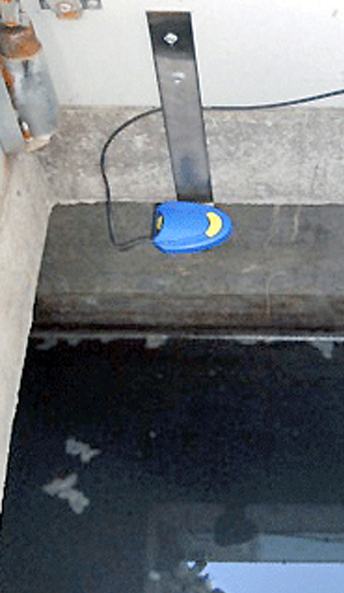
Quick ViewView Full Details |
The
$3.9B global cooling tower industry extracts heat from industrial, commercial
or municipal systems through the process of evaporation. Hot water is pumped
into the cooling tower where it cascades over layers of vertical and horizontal
splash elements surrounded by continuously moving air. As water is recirculated
from the cooling tower to be reused in the process, additional water must be
periodically added to replace the portion of water that has evaporated. The
main causes of evaporation are drift (droplets carried from the tower in the
exhaust air), blow-out (droplets blown out of the tower by gusty winds), plume
(vapor that condenses and rises out of the tower) and blow-down (the amount of
water removed to maintain an acceptable percentage of dissolved solids).
Evaporation or the need for make-up, is determined by measuring the water level
in the cooling tower basin or adjacent sump. When the level falls to a low
level set point, the PLC will open the fill valve until the water reaches a
high level set point. The make-up process can occur hourly or daily based upon
demands on the system, local climate and time of year. At this thermo-electric
power station, an EchoSonic ultrasonic level transmitter is installed in each
cooling tower sump. The non-contact sensor was selected for its reliable,
maintenance-free operation and corrosion-resistant packaging. |
LU27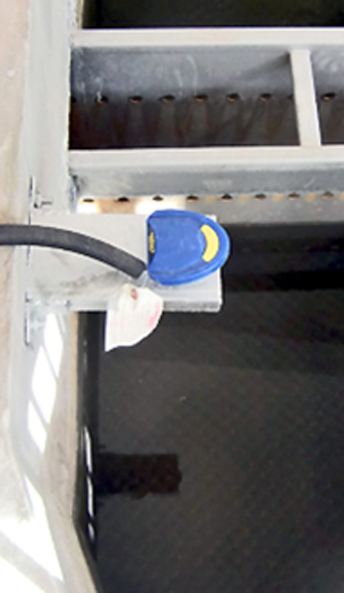
Quick ViewView Full Details |
With
2013 ending as the driest year on record, and California facing dramatic water
shortfalls, Governor Brown declared a drought State of Emergency directing
state officials, water agencies and municipalities to take emergency actions to
ensure the continued supply of safe drinking water to the state. About 60% of
Southern California’s water supply is imported from Northern California and the
Colorado River. The remaining 40% comes from a vast network of underground
aquifers located throughout the greater Los Angeles and Orange County basins.
Given the lack of natural groundwater replenishment (rain and Sierra snow pack
run off) and continued high water demand, the aquifers are running in severe
overdraft. To tackle this situation, municipalities are increasingly focused on
strategies and infrastructure that address conservation, reclamation, treatment
and replenishment of their ailing groundwater systems. In fact, many plant
operators and city engineers see this as their greatest water challenge going
forward. Before recycled water can be returned to an aquifer, it must be
treated through physical, biological or chemical processes. At this treatment
plant, an EchoSonic ultrasonic level transmitter is installed in each clarifier
and provides continuous level data to the SCADA. The non-contact sensor was
selected for its reliable, maintenance-free operation and corrosion-resistant
packaging. |
DL14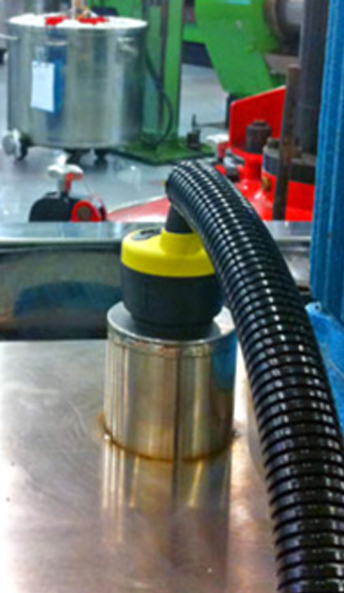
Quick ViewView Full Details |
A new
locomotive costs up to $2.3M with an average maintenance cost of $40k per year,
a significant portion of which is associated with the ongoing lubrication of
these heavy vehicles to maximize their power, efficiency, safety and service
life. To combat friction, maintenance professionals apply a variety of
lubricants including oil, grease and graphite used separately or in
combination. Each type has certain advantages depending upon the nature of the
parts, the speed of the mechanism, the pressure in which the parts are in
contact, and the operating temperature range. Properly maintained, a new
locomotive will deliver about 1 million freight miles, before being completely
rebuilt and sold on the secondary market. At this rail maintenance yard, an
EchoPod ultrasonic level transmitter is installed in each of their lubricant
mixing and dispensing systems. The non-contact sensor was selected because it
can be applied with all of their lubricants, while the integral relays actuate
low level inventory and high level spill prevention alarms. |
LU20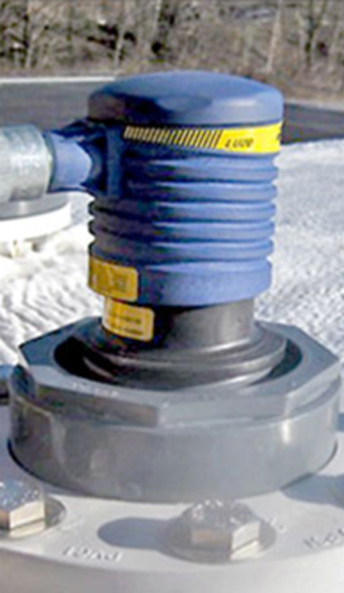
Quick ViewView Full Details |
The
winter of 2013-2014 devastated the Midwest and Northeast regions of the United
States with record snowfall and temperatures. For example, Chicago which
averages 38? of annual snowfall, received 82? of snow which severely stressed
municipalities as they outspent their annual snow removal budgets, and
struggled to keep their roads open. One of the most effective tactics available
to maintenance crews is the pre-storm treatment of their roadways with salt
brine (sodium chloride or rock salt dissolved in water to a salinity of 23%).
As brine has a lower freezing point than water, it’s an excellent de-icing
agent that reduces snow or ice build up above 15° F. (-9° C.). Therefore, brine
treated roads return to normal conditions much faster than untreated roads,
resulting in fewer accidents and delays. During winter, municipalities keep
thousands of gallons of brine solution at the ready. At this New Jersey road
maintenance facility, an EchoTouch ultrasonic level transmitter is installed in
each of their brine storage tanks. The intrinsically safe sensors are located
in a hazardous area near the truck refueling station. |
DL14/Smart Trak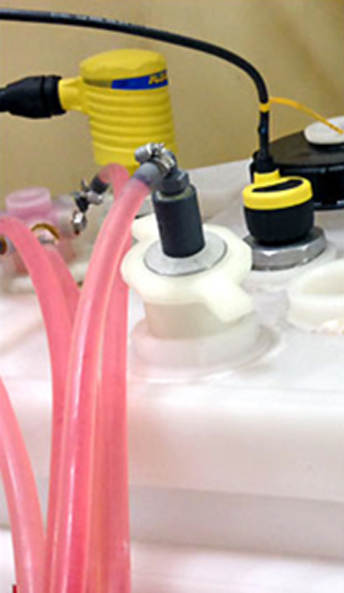
Quick ViewView Full Details |
The
commercial laundry equipment industry serves the hotel, school, hospital,
restaurant, laundromat, corrections, athletic, car wash, cruise ship, senior
care and manufacturing markets with washing, drying and pressing systems. From
clothes to uniforms and linens to towels, America’s commercial launderers
process textiles for reuse. During which, they consume 12M gallons of chemicals
per year including liquid detergents, bleach, softeners, degreasers,
conditioners and starch. Bulk chemicals are delivered in pails, drums, IBC
totes and even tankers to high volume launderers. Chemical inventory monitoring
and dispensing systems, like those manufactured by Knight Equipment, are
critical to laundry efficiency, quality and cost. At this North Carolina
hospital, an EchoPod ultrasonic level transmitter is installed in each IBC tank
filled with laundry chemicals. The non-contact sensor replaced a multi-point
float switch that needed ongoing maintenance due to the sticky nature of their
detergents. Additionally, with continuous measurement, the hospital now
maintains real-time inventory control and proactively manages their chemical
supply chain. |
XP88-89/LU28/LU29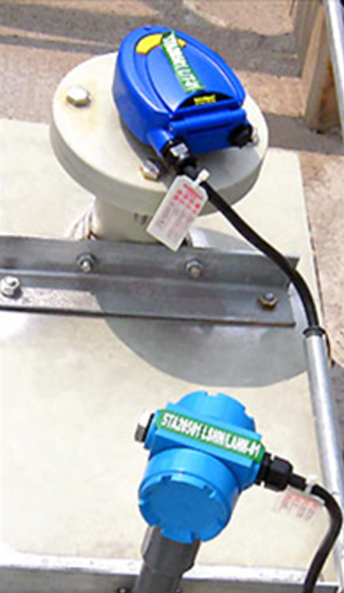
Quick ViewView Full Details |
In
the US, there are approximately 16,150 metropolitan public water treatment
plants that serve about 85% of the population. The balance of Americans reside
in smaller, rural or remote communities that use private well and septic
systems. Metropolitan water districts safely treat millions of gallons of
wastewater per day and water conservation is very important, especially to
those in drought prone regions. Where possible, water is recycled to recharge
aquifers and irrigate municipal landscapes. Depending upon the district and
plant, reclaimed water may also be further treated and recycled back to the
community as drinking water from toilet to tap. When plant operators were
asked, “What are your top three drivers for capital expenditure projects,” 57%
of those polled said that water conservation is in their top three. Here, an
EchoSpan ultrasonic level transmitter (top) is installed over a reclaimed water
basin where sodium hypochlorite is being injected. The non-contact level sensor
is mounted in a 3? stand-pipe to suppress agitation and separate foam from the
point of measurement. Both the level and pH sensor (bottom) are connected to
the SCADA. |
LU80-84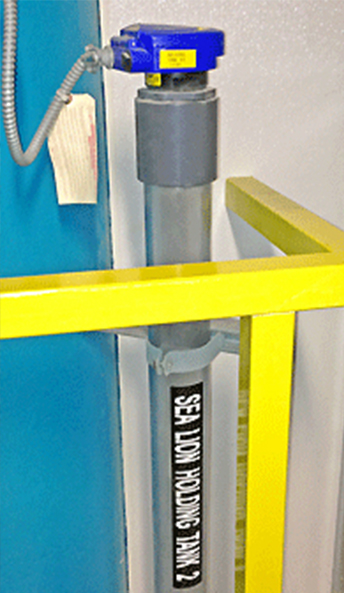
Quick ViewView Full Details |
When
Sea World of San Antonio, TX needed a reliable way to measure the saltwater
level in their Sea Lion exhibit tanks, they turned to Flowline. Sea Lions are
large, inquisitive mammals that often damage accessible instruments through
investigation and play. As a result, the level sensors used in each holding
tank, rank high on their equipment casualty list. Additionally, saltwater is
highly corrosive and scaling. As such, contact sensors corrode or suffer from
the affects of material build-up overtime, requiring maintenance and
replacement. For these reasons, Flowline suggested the use of non-contact
ultrasonic sensors, installed separate from the animals, in a stand-pipe,
located behind each exhibit tank. The result is reliable life science tank
level measurement. Here, an EchoSpan ultrasonic level transmitter is mounted in
a clear PVC stand pipe. The two-wire, 4-20 mA signal output is connected to the
PLC for level monitoring and alarms. When the level drops due to evaporation or
splashing, the tank is automatically filled with additional saltwater. |
DL24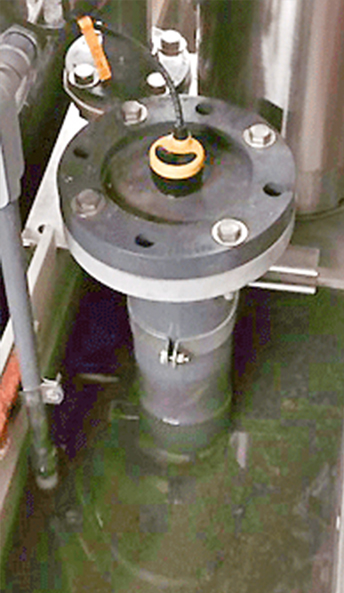
Quick ViewView Full Details |
When a North American
battery manufacturer needed reliable level measurement of their sulfuric acid
reservoirs, they turned to Flowline. Lead acid car batteries are basically a
positive and negative plate, separated by porous insulating material that
allows current to flow between them. The electrolyte is a sulfuric acid and
water solution, commonly referred to as battery acid. Highly corrosive and
difficult to handle, operators dispense acid through filling stations. Each
station has a small reservoir, pump and level sensor. Their level sensors often
failed due to corrosion attack. For this reason, Flowline suggested the use of
our non-contact ultrasonic sensors that are made of rugged PVDF. The result is
reliable battery acid level measurement. Here, an EchoPod ultrasonic level
transmitter is mounted on a 2? stand pipe in each reservoir. The IP68 sensor
was easily configured using our free WebCal software. The 4-20 mA signal is
connected to the PLC for automatic tank refilling with a high and low level
alarm. |


